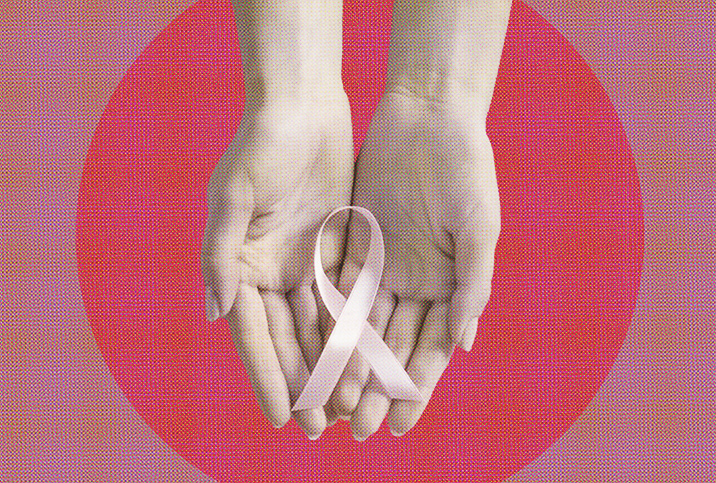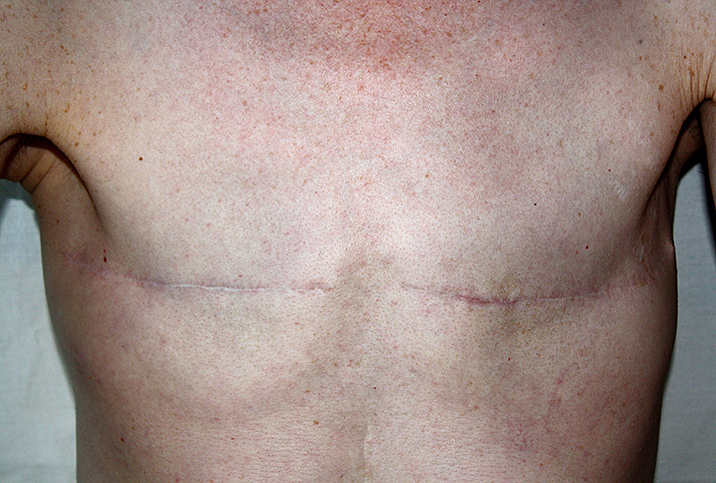Get to Know 6 of the Deadliest Breast Cancers

Breast cancer is the second most common form of cancer in women. While its causes vary, understanding what the disease is, knowing the types and the symptoms, and being versed in your family history all lead to detecting the disease early, so treatment can begin.
Breast cancer can be categorized as invasive and noninvasive. Although noninvasive cancers should be taken seriously, invasive breast cancers tend to raise alarms due to their infiltrating nature, as they can spread beyond the breast tissue, enter the bloodstream or lymph nodes and spread to other organs. In contrast, noninvasive breast cancers tend to remain locally confined within the breast tissue.
Breast cancer, like all cancers, is most successfully treated when detected early.
Invasive breast cancer impacts 1 in 8 U.S. women, so taking a proactive approach is beneficial. According to the American Cancer Society, women ages 45 to 54 should get yearly mammograms, and women ages 55 and older should get mammograms every two years. Women with more risk factors usually get mammograms at younger ages. Talk to your doctor about breast cancer screenings, including mammography, and determine your personal risk factors and what is appropriate for you.
Types of breast cancers
The earliest stage and most common form of breast cancer, ductal carcinoma in situ (DCIS) is noninvasive and begins in the milk ducts of the breast. DCIS symptoms are bloody discharge from the nipple and/or one or more lumps in the breast. Symptoms can be detected early by giving yourself regular breast exams at home. It's important to be familiar with your breast tissue to notice any changes. (The value of self-exams has been called into question by various health organizations, but others continue to emphasize them while stressing that they should be done in conjunction with regular physician exams and mammograms.) Regular mammograms per your age and doctor's recommendation help women detect DCIS early, as well.
Inflammatory breast cancer is an invasive but locally advanced cancer. Locally advanced means that the cancer has spread from its point of origin and is at risk of getting to regional lymph nodes and spreading throughout the body. Inflammatory breast cancer is rare in that it progresses quickly. Symptoms include swollen and tender breasts, discoloration of the breasts, enlarged lymph nodes under the arm, and rapid changes in size and coloration of one breast over the course of a few weeks.
Invasive lobular carcinoma is a rare form of cancer that may spread from the milk ducts to the lymph nodes. Symptoms include swelling in the breast, the inversion of a nipple that wasn't previously inverted, and new dimpling in the breast. Unlike DCIS or other breast cancers, invasive lobular carcinoma does not cause hard lumps in the breast tissue.
Angiosarcoma is not specific to breast tissue, but it's invasive and deadly. It is a rare cancer that attacks the lymph nodes and blood vessels, and since angiosarcoma impacts everything from skin to organ tissue, symptoms vary. The most common areas affected are the skin and neck. Symptoms include bruising, lesions and swelling, and people who have previously had radiation therapy seem to be at higher risk.
Paget disease of the breast is rare and largely affects women ages 50 and older. Paget disease can be either invasive or noninvasive, and it begins in the nipple and spreads outward. Symptoms include a lump in the breast, bloody nipple discharge, itchiness of the nipple, dry or flaky skin around the nipple, and redness of the breast and nipple.
Sometimes after breast cancer treatment, a few cancerous cells remain and begin to multiply again, and breast cancer will come back—recurrent cancer—sometimes months or years after the initial treatment. Symptoms include a new lump in your breast, redness and nipple discharge.
Treatment options
Always talk to your doctor immediately if you believe you have any symptoms of breast cancer. Overall, treatment for all breast cancer boils down to five options. Often, doctors will utilize two or more of the five options to treat the cancer effectively.
Surgery
This involves the removal of the cancerous cells and surrounding areas and is the most common treatment for breast cancer.
Radiation
Commonly used in tandem with surgery, radiation is aimed directly at any remaining cancerous cells in the body. It affects only cancerous cells.
Hormone therapy
Estrogen and progesterone can feed certain cancer cells. Hormone blockers work to stop the cancer by preventing the cancerous cells from feeding off the body's estrogen and/or progesterone.
Chemotherapy
A combination of drugs that either kill cancerous cells or work to slow the spread of cancer, chemotherapy is systemic, meaning it travels throughout the entire body. It can be injected into the bloodstream to circulate or taken orally. Cytotoxic drugs can be used in addition to chemotherapy. Those are taken orally or through the bloodstream and work similarly to chemotherapy.
Targeted therapy
This is a newer form of treatment and most commonly used in addition to chemotherapy and hormone therapy. Targeted therapy aims to attack the cancer cells without harming the healthy cells in the body. Doctors identify which cells are out of balance in the breast tissue and administer drugs that block those abnormalities.
Breast cancer, like all cancers, is most successfully treated when detected early. Knowing your family history, checking up on your own body consistently, and getting regular mammograms after the age of 45 (younger if there are risk factors) are all important habits to ensure early detection.


















